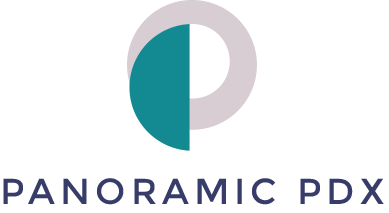
Common Questions About PRT
-
PRT is a mind-body approach to chronic pain that helps retrain the brain’s interpretation of pain signals. Pain often begins with an injury, illness, or surgery, but even after the body has physically healed, pain can persist. When pain becomes chronic, it’s often no longer signaling tissue damage—it’s a pattern the nervous system has learned and is continuing to repeat. PRT helps you gently shift your relationship to pain, reduce fear, and reconnect with a sense of safety in your body.
-
PRT was developed to support people living with primary pain—pain that isn’t caused by ongoing tissue damage or inflammation. This includes pain that persists after an injury has healed, or when medical imaging shows no clear structural cause.
Conditions that may respond well to PRT include back pain, neck pain, fibromyalgia, migraines, pelvic pain, irritable bowel syndrome (IBS), nerve pain, and other forms of pain often labeled as centralized, functional, or medically unexplained.
PRT may also be helpful for people with mixed pain—where a structural issue exists, but pain is amplified or prolonged by fear, stress, or nervous system sensitization. If you’ve been told that everything “looks fine” but you’re still in pain, PRT may offer a different way forward.
-
PRT was originally developed to treat chronic pain—especially pain like back pain, migraines, or other musculoskeletal symptoms that aren’t caused by ongoing tissue damage. This kind of pain is often called neuroplastic pain, meaning it’s maintained by patterns in the brain and nervous system.
Over time, the principles behind PRT have shown promise in supporting a wider range of nervous-system symptoms—not just pain. Many people experience symptoms like fatigue, dizziness, brain fog, or digestive distress even in the absence of pain. These symptoms may also be influenced by the brain and body’s learned protective responses, particularly in the context of stress, trauma, or long-term dysregulation.
While research is still growing, some clients find that PRT principles—like reducing fear, increasing safety, and shifting how we relate to symptoms—can also help with conditions such as:
Tension headaches or migraines
Chronic fatigue
Irritable bowel syndrome (IBS)
TMJ or jaw tension
Certain forms of dizziness or functional neurological symptoms
Pelvic pain and interstitial cystitis
Long COVID (especially when symptoms persist after recovery)
Post Concussion Syndrome
It’s not a cure-all, but for some people, understanding the role of the nervous system can bring meaningful relief, renewed trust in the body, and a gentler relationship with symptoms.
-
Yes. Pain Reprocessing Therapy is designed for people whose pain or symptoms have persisted after an injury has healed or when no ongoing medical cause has been found. It’s important to have a recent and appropriate medical evaluation—ideally within the past six months—to rule out conditions that require medical or physical treatment.
I’m a licensed therapist—not a physician—and I don’t diagnose or treat medical conditions outside my scope of practice. My role is to support you in exploring how the brain, nervous system, and past experiences may be contributing to your symptoms.
I’m willing to collaborate with other members of your care team when helpful.
-
No! Not at all. Your pain is real. PRT is based on research that shows how the brain and nervous system can generate pain even when there’s no ongoing physical injury. That doesn’t make the pain any less real, but it does open up ways to work with it—namely mind-body therapeutic approahes like PRT.
-
PRT draws from theraputic modalities and tools that may feel familiar—like compassion focused work, mindfulness, and emotional awareness—but it’s different from traditional talk therapy. It’s more body-based and focused on helping the brain unlearn fear and hypervigilance around pain.
-
In our work together, we’ll blend PRT with other trauma-informed and somatic approaches—moving gently, with attention to your nervous system and emotional safety. This might include exploring fear-pain cycles, emotional processing, or building trust in your body again.
We go at your pace. I’ll also support you in practicing skills and setting gentle intentions between sessions—like somatic awareness, nervous system regulation, or exposure work when it feels right.
If something doesn’t resonate, we’ll stay flexible and keep exploring. There’s no single map for this journey—we follow what feels most supportive for you.
-
Absolutely. PRT can often complement medical care, physical therapy, and other mind-body or holistic approaches. I’m happy to collaborate with other members of your care team as needed.
-
Like any therapy, PRT isn’t a one-size-fits-all approach. Some clients experience significant relief; others notice more subtle shifts in fear, tension, or how they relate to their symptoms. Many find that the process itself—of learning to relate to their body with more compassion—has lasting benefits, even beyond pain.
If it turns out that PRT isn’t the right fit—or isn’t the whole picture—we won’t force it. I draw from a range of trauma-informed, somatic, and mind-body approaches to support healing. Sometimes the work is about pain. Sometimes it’s about the nervous system, emotional patterns, or the deeper stories the body is holding. We’ll stay curious and responsive, together.
I hold a Pain Reprocessing Therapy® (PRT) Certification
Certified through the Pain Reprocessing Therapy® Center.
View my Certified Practitioner listing →
This video (from the creators of PRT) offers a helpful overview of how the brain and nervous system are involved in chronic pain—and how they can rewire for healing.
Let’s explore this together.
If you're wondering whether the Pain Reprocessing Therapy approach might be a good fit,
submit the screening form below with a few details.
I’m currently accepting new clients for telehealth only. I’m in-network with OHP and PacificSource, and I can also provide superbills for out-of-network reimbursement.


